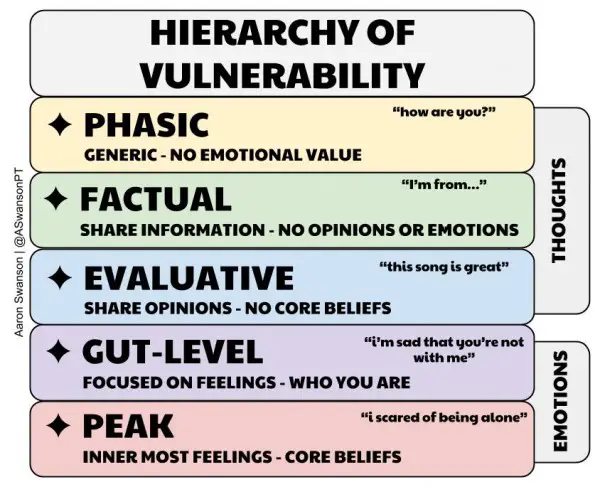click here for this edition’s table of contents
Social & Communication
1. Social interaction is an important aspect of health. Specifically, the people you are around the most influence your decisions more than any health practitioner can in one visit. Researchers are starting to wonder if this social support is an easy change that healthcare is not taking advantage of. Here in this article they introduce a 5 step ladder to social support.
2. Tell people in pain to find a social circle and get optimistic.
“An optimistic outlook, positive coping strategies, and strong external social support are common characteristics found in individuals who returned to sport after hip arthroscopy for femoroacetabular impingement.”
3. Nature AND Nurture.
“When preschoolers spend time around one another, they tend to take on each others’ personalities, indicates a new study by Michigan State University psychology researchers.”
4. Read this one. Why facts don’t change our minds.
“sociability is the key to how the human mind functions or, perhaps more pertinently, malfunctions”.
5. When you have expectations on how it should be, you’ll never see how it is.
“Research on marriages with high levels of conflict finds that more than half of the couples in these marriages have disputes involving the failure of one or both partners to conform to unspoken expectations. (Philpot 2001)”
6. I heard Carl Jung say all of his patients were in psychotherapy due to a secret that they had not been able to tell anyone. #Communication #CloseFriends #SomeoneThatListens
7. We shouldn’t normalize ridiculous behavior.
“People appear to have a systematic tendency to focus on the possibilities they see as normal and to ignore the ones they see as abnormal.”
8. Eric Barker and Robert Cialdini on Motivation
“There’s a study of epilepsy sufferers who were having trouble being regular with their medication regimen. They were given an “if, when, then” statement to make, such as, “If it’s eight o’clock in the morning and I’ve finished brushing my teeth, then I will take my prescribed medication.” That statement increased compliance with the regimen from 55 percent to 79 percent. The key is to be specific about the place and time that serves as a cue for you to take the step that you want to take.”
“The best persuaders become the best through pre-suasion— the process of arranging for recipients to be receptive to a message before they encounter it.”
9. We’re wired to unconsciously mirror other people. It’s a complementary behavior. If someone is nice, we’re nice back. If someone is angry, we’re angry back. But sometimes if we want to change the course, we should try non-complementary behavior. Think about this next time you’re in an argument or an uncomfortable social situation.
10. Vulnerability is important. Especially in conversations. It’s important to know the magnitude of what we’re saying at an emotional level.
The main reason I do this blog is to share knowledge and to help people become better clinicians/coaches. I want our profession to grow and for our patients to have better outcomes. Regardless of your specific title (PT, Chiro, Trainer, Coach, etc.), we all have the same goal of trying to empower people to fix their problems through movement. I hope the content of this website helps you in doing so.
If you enjoyed it and found it helpful, please share it with your peers. And if you are feeling generous, please make a donation to help me run this website. Any amount you can afford is greatly appreciated.



